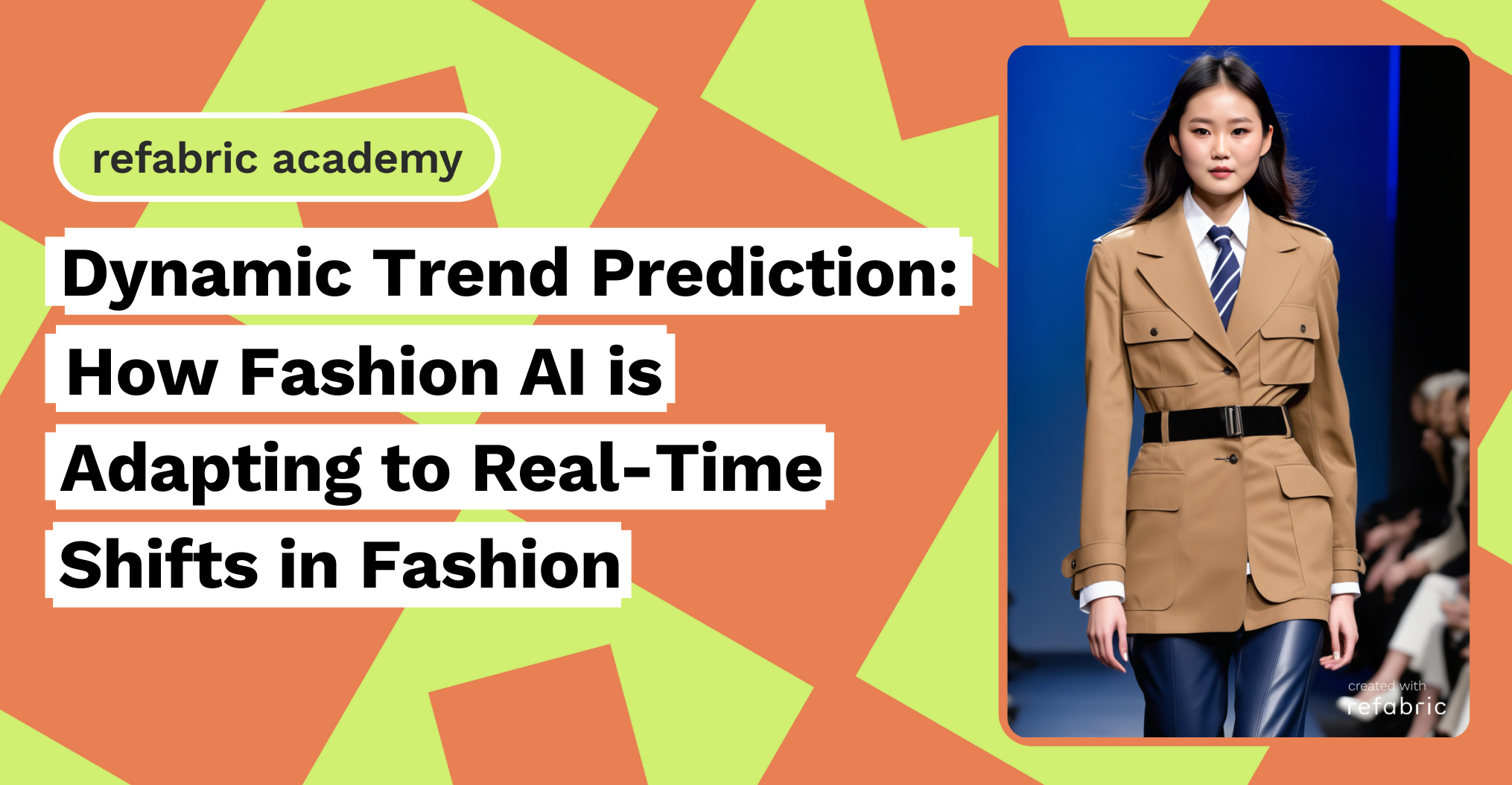In today’s fast-paced fashion world, fashion AI plays a crucial role in helping brands stay ahead of trends and connect with consumers on a deeper level. The rapid evolution of cultural influences, social events, and viral moments constantly shifts fashion trends, making traditional forecasting methods too slow and sometimes ineffective. This is where AI-driven trend prediction enters the scene, enabling fashion brands to adapt and respond to trends as they emerge in real time. Fashion AI is now equipped to interpret sudden changes in style preferences driven by influencers, cultural phenomena, and global events, ultimately revolutionizing how brands forecast, design, and connect with their audiences.
How Fashion AI Works in Trend Prediction
At the core of dynamic trend prediction is data. Fashion AI gathers vast amounts of information from a wide range of sources: social media platforms, online shopping patterns, global news, and even consumer sentiment. Advanced algorithms analyze this data and extract patterns, identifying what’s resonating with consumers across demographics, regions, and even specific style preferences.
Natural language processing (NLP) and image recognition are key components in this process. By scanning thousands of social media images, posts, and conversations, fashion AI can recognize the rise of particular colors, styles, and garment types. NLP helps AI decipher subtle meanings in conversations, spotting emotions, preferences, and even dissatisfaction with current offerings. Image recognition enables the identification of new textures, prints, and patterns, capturing visual trends that words alone can’t describe.
As these technologies advance, AI trend prediction is becoming less reliant on historical data and increasingly focused on real-time shifts, allowing brands to respond to immediate cultural and social dynamics that may not have existed even days prior.
Adapting to Influencer Styles and Viral Trends
Social media influencers have become major trendsetters in fashion, with the power to create instant viral moments around particular styles or pieces. Traditional forecasting methods, however, can take months to identify and react to trends that influencers may popularize in a single post. Fashion AI solves this gap by tracking influencers in real time and analyzing how their followers engage with their content.
When an influencer introduces a new style, fashion AI can immediately monitor engagement metrics like comments, likes, and shares. Using these insights, AI can forecast how likely the style is to gain traction and what variations might appeal to a broader audience. If an influencer’s outfit featuring a specific color or silhouette goes viral, AI can help brands quickly identify this trend, potentially pushing out collections or marketing campaigns that cater to it in record time.
Fashion AI’s ability to monitor influencers also extends to predicting the lifespan of viral trends. Some trends are ephemeral, fading within weeks, while others continue to influence consumer preferences for entire seasons. By tracking consumer sentiment and engagement over time, fashion AI can determine which trends are likely to have staying power and which are simply fleeting fads.
Responding to Cultural and Social Shifts
Fashion doesn’t just follow individual styles; it also reflects broader cultural movements and social shifts. Events like political changes, economic fluctuations, or significant social issues can influence how consumers think about fashion, often resulting in subtle shifts in style, color preferences, and purchasing behavior. Fashion AI can interpret these signals, allowing brands to stay in tune with the cultural mood of their audiences.
For instance, during the recent shift toward sustainability, AI was able to detect rising consumer interest in eco-friendly fashion and natural, earthy color palettes. By recognizing and forecasting these preferences, brands could adapt their collections to align with the consumer desire for sustainable choices, capturing market attention with relevant designs and materials.
Similarly, when a cultural event sparks conversations around specific symbols or colors, fashion AI can identify these associations and predict their influence on style preferences. For instance, during global sporting events, AI might detect increased interest in athletic-inspired wear, helping brands capitalize on the trend by introducing collections that blend sportswear aesthetics with everyday fashion.
Bringing Real-Time Adaptation to the Fashion Industry
The ultimate advantage of fashion AI lies in its ability to enable immediate responses to the trends it detects. Brands equipped with AI-driven trend prediction tools can move from analysis to action faster than ever. Some are even using AI to streamline the design and manufacturing processes, allowing them to turn trend predictions into finished products with unparalleled speed. AI also allows for constant testing and iteration, as brands can refine designs based on near-instant feedback from consumer engagement on social platforms.
In addition to improving responsiveness, AI-driven trend prediction can lead to more sustainable fashion cycles. By basing production on real-time insights, brands can avoid overproducing styles that may not resonate with consumers, reducing waste and creating products that more closely align with consumer desires.
Embracing the Future of Fashion with Dynamic Trend Prediction
Fashion AI is transforming trend prediction from a backward-looking process to a forward-thinking, adaptive system. As technology continues to evolve, AI-driven trend prediction will likely become an integral part of every major fashion brand’s strategy, helping them stay aligned with cultural moments, influencers, and consumer sentiment in real time. This shift promises not only to make fashion more relevant but also to create a more sustainable, consumer-centric industry that can keep pace with the speed of culture.
